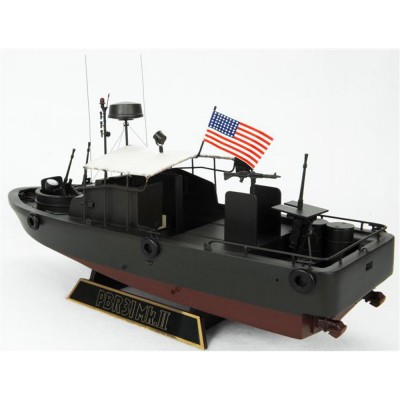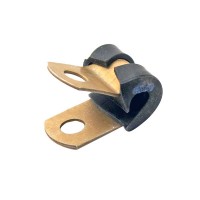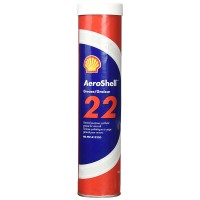FREE SHIPPING ON ORDERS OVER $350 (SOME EXCLUSIONS APPLY) | 877-4-SPRUCE
Pbr Mk-II Patrol Boat Model
$1179.00/Each
Part# 13-11113
MFR Model# MBPPBRT
MFR Model# MBPPBRT
Overview
|
PBR (Patrol Boat, River), also called “Riverine” and “Pibber”, is the US Navy designation for a type of rigid-hulled patrol boat used in the Vietnam War from March 1966 until the end of 1970. They were deployed in a force that grew to 250, the most common craft in the River Patrol Force, Task Force 116, and were used to stop and search traffic in areas such as the Mekong Delta, the Rung Sat Special Zone, the Saigon River and in I Corps, in the area assigned to Task Force Clearwater, in an attempt to disrupt weapons shipments. In this role they frequently became involved in firefights with enemy soldiers on boats and on the shore. PBRs were also used to infiltrate Navy SEAL teams. The Mark II version, 32 feet long and one foot wider beam, had improved drives to reduce fouling, and aluminum gunwales to resist wear. It usually operated with four enlisted men, of which the most senior crewman was designated the boat commander. They were powered by dual 220 hp (164 kW) Detroit Diesel engines with Jacuzzi Brothers water jet drives. The boats reached top speeds of 28.5 knots (53 km/h). The boat was typically armed with twin .50 caliber (12.7 mm) machine guns (the forward 50s), an M60 7.62 mm machine gun, a Mark 18 grenade launcher, and sometimes a 20 mm cannon. The machine gunners and conning tower were protected with ceramic armor. The Patrol Boat Riverine is currently displayed at the New Jersey Naval Museum in Hackensack, NJ. The PBR was featured in the movie Apocalypse Now (1979). This is the very same type of fiberglass craft used in the film. The units using the PBRs were often called “The Brown Water Navy” (and those rivers were pretty brown) and also “Swift Boats” (and at 30 Knots fully loaded they PBRs were swift). |
WARNING: Cancer and Reproductive Harm - www.P65Warnings.ca.gov. |
Q&A
Please note, Aircraft Spruce ®'s personnel are not certified aircraft mechanics and can only provide general support and ideas, which should not be relied upon or implemented in lieu of consulting an A&P or other qualified technician. Aircraft Spruce ® assumes no responsibility or liability for any issue or problem which may arise from any repair, modification or other work done from this knowledge base. Any product eligibility information provided here is based on general application guides and we recommend always referring to your specific aircraft parts manual, the parts manufacturer or consulting with a qualified mechanic.








 FREE Shipping
FREE Shipping

